
Western Australia is a state of Australia occupying the western third of the land area of Australia, excluding external territories. It is bounded by the Indian Ocean to the north and west, the Southern Ocean to the south, the Northern Territory to the north-east, and South Australia to the south-east. Western Australia is Australia's largest state, with a total land area of 2,527,013 square kilometres (975,685 sq mi). It is the second-largest country subdivision in the world, surpassed only by Russia's Sakha Republic. As of 2021, the state has 2.76 million inhabitants—11 percent of the national total. The vast majority live in the south-west corner; 79 percent of the population lives in the Perth area, leaving the remainder of the state sparsely populated.
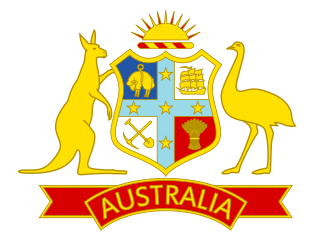
The Australia men's national cricket team represents Australia in men's international cricket. As the joint oldest team in Test cricket history, playing in the first ever Test match in 1877, the team also plays One-Day International (ODI) and Twenty20 International (T20I) cricket, participating in both the first ODI, against England in the 1970–71 season and the first T20I, against New Zealand in the 2004–05 season, winning both games. The team draws its players from teams playing in the Australian domestic competitions – the Sheffield Shield, the Australian domestic limited-overs cricket tournament and the Big Bash League. Australia are the current ICC World Test Championship and ICC Cricket World Cup champions. They are regarded as one of the most successful cricket teams in the history of Cricket
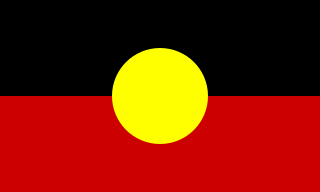
Aboriginal Australians are the various Indigenous peoples of the Australian mainland and many of its islands, but excluding the ethnically distinct people of the Torres Strait Islands. The term "Indigenous Australians" is applied to Aboriginal Australians and Torres Strait Islanders collectively.

Australia, officially the Commonwealth of Australia, is a sovereign country comprising the mainland of the Australian continent, the island of Tasmania, and numerous smaller islands. Australia is the largest country by area in Oceania and the world's sixth-largest country. Australia is the oldest, flattest, and driest inhabited continent, with the least fertile soils. It is a megadiverse country, and its size gives it a wide variety of landscapes and climates, with deserts in the centre, tropical rainforests in the north-east, tropical savannas in the north, and mountain ranges in the south-east.
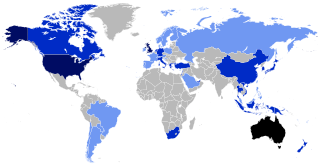
Australians, colloquially known as Aussies, are the citizens, nationals and individuals associated with the country of Australia. This connection may be residential, legal, historical or ethno-cultural. For most Australians, several of these connections exist and are collectively the source of their being Australian. Australian law does not provide for a racial or ethnic component of nationality, instead relying on citizenship as a legal status.
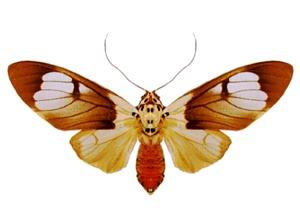
Amerila is a genus of moths in the subfamily Arctiinae. A number of species in this genus have a special defence mechanism when they are in their adult stage. When disturbed, they exude a frothy yellow fluid from glands beside the eyes, while making a sizzling noise to ward off their attacker. Similar behaviour has been observed in fertilised females of the North-American moth Utetheisa ornatrix.

Hemiarcha is a genus of moths in the family Gelechiidae.

Australasia is a subregion of Oceania, comprising Australia, New Zealand and some neighbouring islands in the Pacific Ocean. The term is used in a number of different contexts, including geopolitically, physiogeographically, philologically, and ecologically, where the term covers several slightly different but related regions.
Eugatha is a monotypic moth genus of the family Noctuidae. Its only species, Eugatha thermochroa, is found in New Guinea and the Australian state of Queensland. Both the genus and species were first described by George Hampson in 1911.
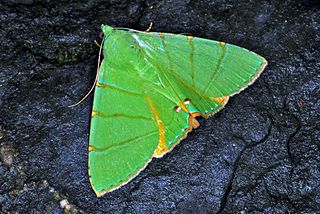
Eulepidotis is a genus of moths of the family Erebidae erected by Jacob Hübner in 1823.

Mimoclystia is a genus of moths in the family Geometridae described by Warren in 1901.

Lasiosticha is a genus of snout moths. It was described by Edward Meyrick in 1887.
Lasiosticha thermochroa is a species of snout moth in the genus Lasiosticha. It was described by Oswald Bertram Lower in 1896 and is found in Australia.
Eulepidotis thermochroa is a moth of the family Erebidae first described by George Hampson in 1926. It is found in the Neotropics, including Mexico.
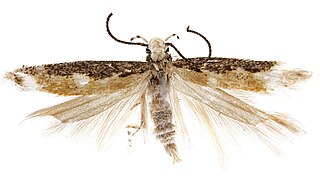
Gelechiinae is a subfamily of moths in the family Gelechiidae. It was described by Henry Tibbats Stainton in 1854.
Hemiarcha bleptodes is a moth in the family Gelechiidae. It was described by Alfred Jefferis Turner in 1919. It is found in Australia, where it has been recorded from Queensland and New South Wales.
Hemiarcha metableta is a moth in the family Gelechiidae. It was described by Alfred Jefferis Turner in 1933. It is found in Australia, where it has been recorded from Queensland.
Hemiarcha melanogastra is a moth in the family Gelechiidae. It was described by Alexey Diakonoff in 1954. It is found in New Guinea.












